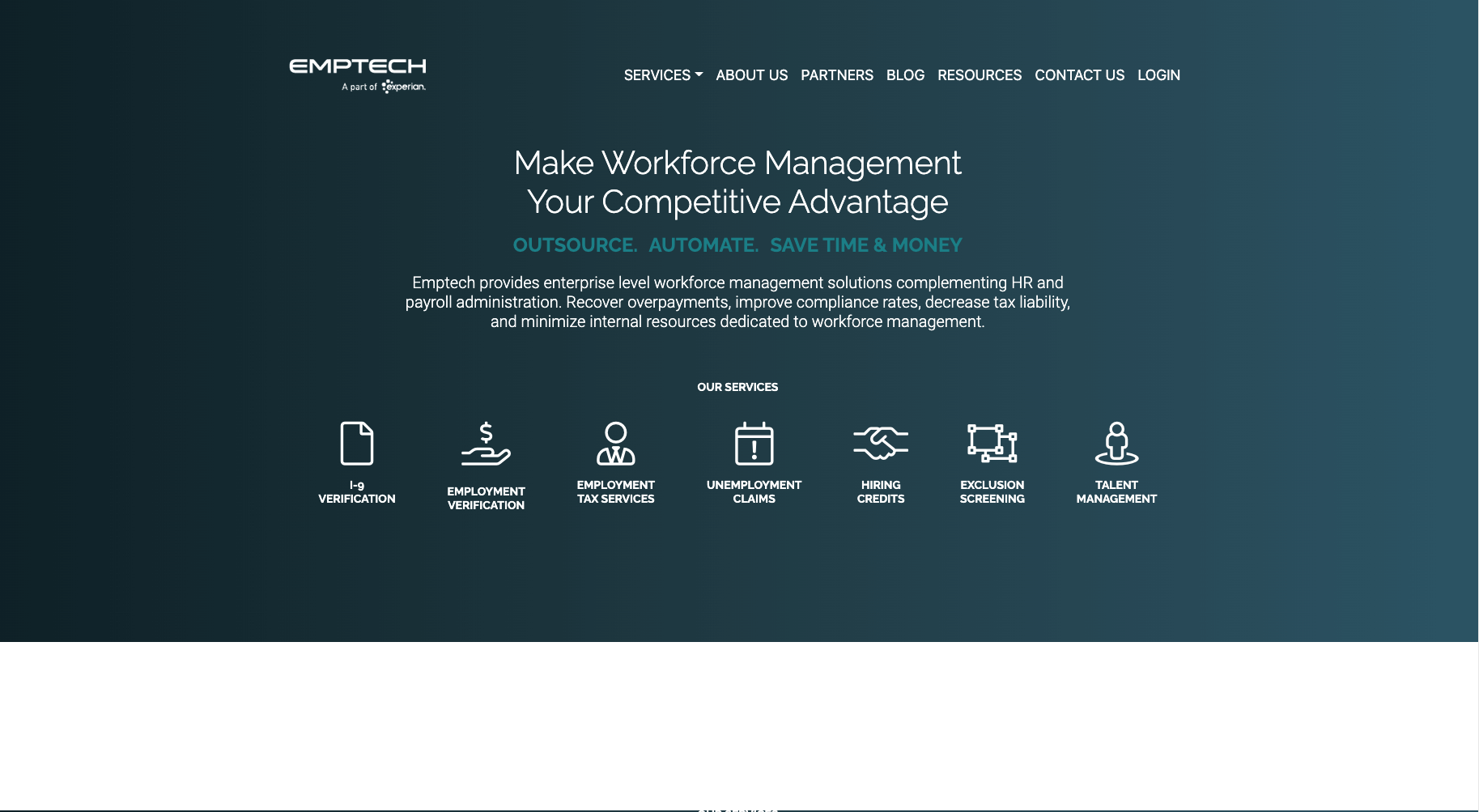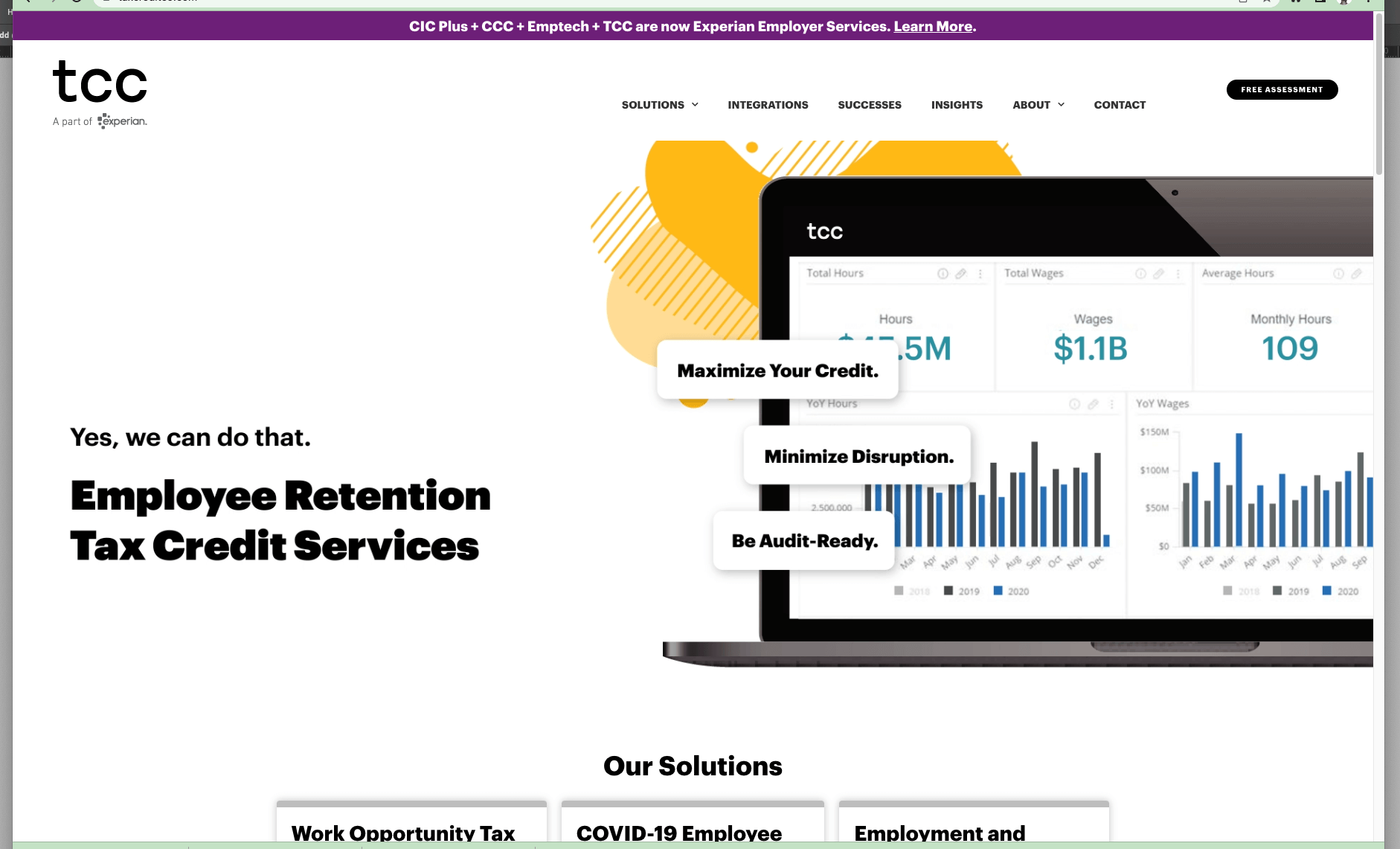Continued growth and a strong financial position
Summary
We have delivered a strong performance in FY22, with total revenue growth3 of 17%, organic revenue growth of 12%, and a 19% increase in Benchmark EBIT, at constant exchange rates. Our strong operating performance translated to very strong financial performance, with 23% growth in Benchmark operating cash flow and 21% growth in Benchmark EPS, both at constant exchange rates. Our focus on strategic innovation and investment continues to underpin our performance as we deliver new and innovative products for our customers. We invested US$508m in organic capital investment and US$781m in acquisitions, to fuel the future growth of the business. We ended the year in a strong financial position, with our Net debt to Benchmark EBITDA ratio of 1.9x, US$2.6bn of undrawn committed bank facilities and more than half of our bonds falling due in over five years.
Reporting currency
We report our financial results in US dollars. The strengthening of our other trading currencies during the year, primarily the Brazilian real against the US dollar, increased total revenue by US$52m, but did not impact Benchmark EBIT. A ± 1% change in the Brazilian real or pound sterling exchange rate would both impact revenue by ± US$7m.
Details of the principal exchange rates used and currency exposures are provided in note 10 to the Group financial statements on page 182.
Continued growth
We have grown revenue over each of the past 16 years, notwithstanding the challenges faced during the global financial crash of 2008 and, more recently, the COVID-19 pandemic. We anticipate another year of progress in FY23, and project organic revenue growth in the range of 7% to 9% for the year as a whole.
In FY22 total revenue growth was 17% at both constant and actual exchange rates, and organic revenue grew 12%. We have continued to expand into new verticals, such as income verification and our insurance marketplace, driving growth through investment and innovation. We launched 104 new products in the year, with another 151 in the pipeline.
Business-to-Business growth has been galvanised by progress in our strategic initiatives, strength in data volumes, extension of vertical markets and increased demand for our innovative platforms. Revenue grew by double digits across all regions, with an outstanding performance in Latin America, where growth was 23% at actual exchange rates.
Both digital transformation and the expectations of customers have been accelerated by the global pandemic. We have seen increasing demand from financial services clients for data, with ongoing investment to drive their digital transformations. We position ourselves to capitalise on these emerging trends by embracing an agile mindset, developing products at pace and putting customers at the heart of everything we do. Through continuous innovation, we are able to launch upgrades in smaller increments, bringing quality products and solutions to market more quickly to meet emerging needs.
Growth of Experian Ascend continued as we delivered further installations of our global platform. In Decisioning, we secured new wins for our cloud-enabled decisioning platforms, and performance in health and fraud and identity management were strong.
Strength in Consumer Services was buoyed by the ongoing expansion of our free membership base, now 134 million globally. Revenue increased by 23%, with all regions in this business segment growing revenue by more than 20% at actual exchange rates. Transaction volumes across our credit comparison marketplace improved, as consumers search for credit encouraged by market conditions. We are progressing the development of our insurance marketplace as we integrate the Gabi acquisition. Limpa Nome, our debt resolution service in Latin America, which helps consumers resolve and settle bills, also continues to perform strongly.
Cost base
As the economy emerges from the impacts of COVID-19 there may be increased pressure on costs and margins. Global employee attrition rates are increasing, prompted by the radical lifestyle changes of the pandemic and the high numbers of job vacancies. A 1% rise in our base payroll cost would lead to an additional expense of US$22m. Inflationary burdens on other costs are increasing, and factors such as record energy and fuel prices as well as global supply chain issues could also lead to higher operating costs. We continue to monitor cost pressure points to mitigate inflation where possible.
We maintain a focus on cost management and efficiency, investing in global delivery and shared service centres, as well as robotics, to deliver processes in a more rigorous and judicious manner. Global enablement continues to improve performance, and we are reducing the cost of operations through common architectures, code and technology expertise.
We now have five global delivery centres, located in Bulgaria, Chile, Costa Rica, India and Malaysia, employing 3,750 staff, where end-to-end operations are performed from data analysis, through product development, to implementation.
We have a well-established culture of continuous improvement and manage key business projects through co-operation and collaboration to enhance productivity and effectiveness. Our global finance transformation programme is bringing operational efficiency through intelligent automation, dynamic business intelligence, and standardisation and globalisation of our finance systems, propelled by investment in our people.
In our core finance functions we now have 410 Lean Six Sigma practitioners certified through our EmPower continuous improvement programme.
We have reduced discretionary spend to combat rising depreciation and amortisation charges resulting from our investment in technology. Travel costs remain significantly down on pre-COVID-19 pandemic levels as we adjust to hybrid working and collaboration through technology.
We continue to rationalise our workplace footprint, giving greater choice to employees on how and where they work. We are investing in our remaining office estate to make it more inviting and sustainable.
Interest
Benchmark net finance costs decreased by US$11m. Debt refinancing in the year enabled a reduction in our average funding cost.
Foreign exchange gains on Brazilian real intra-Group funding of US$43m, and other fair value remeasurements, contributed to the decrease in statutory net finance costs of US$186m. At 31 March 2022, interest on 98% of our net funding was at fixed rates (2021: 91%).
A fundamental reform of major interest rate benchmarks is taking place globally, involving the replacement of some interbank offered rates. Historically our main exposures were indexed to pound sterling and US dollar LIBOR. During FY22, we have amended our revolving credit facilities and other financial instruments, so that once these reforms are completed, sterling pound exposures will be indexed to Sterling Overnight Index Average (SONIA) rate, and US dollar exposures to the Secured Overnight Financing Rate (SOFR).
Taxation
Our total tax charge was US$296m (2021: US$275m), 20.5% (2021: 25.5%) of profit before tax. Our effective tax rate on Benchmark PBT was 25.7% (2021: 25.9%), reflecting the mix of profits and prevailing tax rates by territory. We expect our effective tax rate on Benchmark PBT in FY23 will be approximately 26%.
The equivalent cash tax rate of 23.8% remains below our Benchmark tax rate and we provide a reconciliation in the above table. 'Other' includes the phasing of tax payments in FY22, and an acceleration of tax deductions as a result of US legislative changes in FY21. We anticipate that our cash tax rate will increase and move closer to our Benchmark tax rate over the course of the next two years, as tax amortisation of goodwill on earlier acquisitions and prior tax losses are utilised.
The profit for the year from discontinued operations of US$16m comprised the release of tax provisions relating to historical disposals. See note 17 to the Group financial statements.
Earnings per share
Basic EPS was 127.5 US cents (2021: 88.2 US cents). Basic EPS was increased by 3.0 (2021: reduced by 14.9) US cents in respect of discontinued operations, Exceptional items and other adjustments made to derive Benchmark PBT.
Benchmark EPS was 124.5 US cents (2021: 103.1 US cents), an increase of 21% at actual and at constant exchange rates. A ± 10% change in the Brazilian real exchange rate would impact Benchmark EPS by ± 2 US cents. There would be no impact on Benchmark EPS from a similar change in the pound sterling exchange rate. We provide further information in note 18 to the Group financial statements on pages 188 to 189.
Cash and liquidity management
Cash generation was strong, with a 109% (2021: 106%) conversion of Benchmark EBIT to Benchmark operating cash flow, lifted 5% by a receipt of US$89m from a one-off contract. Benchmark free cash flow was US$1,311m (2021: US$1,124m). The continued strength of our Benchmark operating cash flow performance reflects the nature of our business and financial model, and our focus on working capital management.
Funding
During the year, we made one bond issue of €500m, maturing in 2031, increasing the average duration of our bond debt and diversifying the mix of our currency borrowings. At 31 March 2022, 57% (2021: 56%) of our total borrowings fell due in over five years, and our undrawn committed bank borrowing facilities were US$2.6bn (2021: US$2.7bn).
The chart above shows the maturity profile for our term debt. We aim to minimise refinancing risk in any given year. Currency-denominated balances are translated to US dollars at swapped rates where hedged.
We keep our debt levels stable at a low multiple of our profits. We have reviewed emerging practice following the implementation of IFRS 16, and have updated our definition of Net debt to include lease obligations. Net debt at 31 March 2022 was US$3,950m (2021 restated: US$4,026m), 1.9 times Benchmark EBITDA (2021: 2.2 times), compared to our target range of 2.0 to 2.5 times. The reduction below our target range was due to the very strong cash flow in the year.
The covenant on our banking facilities requires that Benchmark EBIT should cover net interest expense, excluding the effects of IFRS 16, before financing fair value remeasurements, by three times. At 31 March 2022, this ratio was 16 times (2021: 12 times). We have no undue concentration of repayment obligations in respect of borrowings and did not breach any covenants given on borrowings during the year under review or the prior year.
Capital expenditure
Our capital expenditure of US$508m (2021: US$422m) was 8% (2021: 8%) of revenue. We anticipate that future organic capital investment will continue to be in line with our long-term range of 8% to 9% of total revenue, as we advance our technology estate, creating competitive advantage through technology modernisation.
Disciplined capital management
Our capital allocation framework is based on balancing a number of competing priorities – notably operating and capital investment, dividends, acquisitions and share repurchases. The mix between these categories will vary over time. Our free cash flow has consistently been strong and a cornerstone of our disciplined capital allocation.
We completed our FY22 share repurchase programme for a net cash consideration of US$149m.
We assess acquisition opportunities against a range of metrics, including economic valuations and the earnings enhancement we expect them to bring relative to share repurchases. Net investment of US$1,167m (2021: US$881m) comprised cash flows for net capital expenditure, acquisitions, disposal proceeds and net investments.
The chart above shows our capital framework as executed this year.
Associates and venture investments
Our investment in smaller start-ups and FinTech companies enhances innovation and the development of unique IP. During the year, we completed a further 16 investments, bringing our total programme financing to US$335m in 34 active venture companies.
Since programme inception a total of US$180m has been realised on exit from ventures, generating a gain on sale of US$123m, and a return on our cash investment of 3.2 times.
Vector CM Holdings (Cayman) L.P., an associate undertaking, completed the merger of its Cheetah Digital business with CM Group in February 2022, transitioning to a trade investment from that date. The promissory note and associated interest of US$110m were repaid, and a gain of US$95m recognised on transition.
We no longer have significant influence over our Russian associate United Credit Bureau, and have accordingly recognised a disposal, writing off our investment, recording a loss of US$17m.
We have also reclassified a UK associate as held-for-sale.
Acquisitions were across both business segments and contributed US$93m to revenue and US$17m to profit before tax in the year, with annualised pro-forma revenue of US$111m.
Share capital
Our spend on net share repurchases, which offset deliveries under employee share plans, was US$149m (at an average price of 2,824p) and the number of shares in circulation increased by 0.4m (0.04%). During the year, the average number of shares in circulation was 914m (2021: 910m) and the closing number of shares at 31 March 2022 was 914m (2021: 914m). In the past five years, we have completed net share purchases of over US$1.1bn and we expect to execute purchases of up to US$175m in the coming year.
Dividends and distributable reserves
Our dividend policy aims to pay dividends over time broadly in line with the underlying growth in Benchmark EPS. This aligns shareholder returns with our underlying profitability. Our long-term record of profitability and strong cash flow conversion has enabled us to pay increasing dividends since we became a listed company in 2006, and in the last five years, ordinary dividend payments totalled US$2.1bn.
The Board has announced a second interim dividend of 35.75 (2021: 32.50) US cents per share, giving a total dividend for the year of 51.75 (2021: 47.00) US cents per share, which is covered 2.4 times by Benchmark EPS (2021: 2.2 times). Ordinary dividends paid in the year amounted to US$444m (2021: US$427m).
Experian plc, and the UK entity responsible for distributing dividends under the Group’s Income Access Share arrangements, have significant distributable reserves, which at 31 March 2022 were US$18.4bn and US$10.3bn respectively. See note L to the Company financial statements for further detail.
Net assets and ROCE
Operating segment net assets increased by US$659m in the year largely as a result of acquisitions.
ROCE for FY22 and FY21 (restated) was 15.7% and 14.9% respectively, increasing as Benchmark EBIT progression in FY22 exceeded growth in capital employed. The return was lower than preceding years due to the effect of acquisitions completed partway through each year. ROCE is a post-tax measure and we use our Benchmark tax rate for ease of calculation.
Further information on net assets by region is given in note 9 to the Group financial statements on page 179.
Financial risk management
The key financial risks specific to our business are set out in the Risk management section on pages 85 to 92. We continue to consider both the direct and indirect impact of COVID-19 on our business and the global economy. The safety, health and well-being of our employees, clients and consumers are our foremost priority. Most of our employees are continuing to work remotely.
There is ongoing uncertainty surrounding the longer-term impact on trade and legislative arrangements following the UK’s departure from the European Union. We continue to monitor this risk together with inflationary and geopolitical risks, including market volatility, regulatory and tax policy uncertainty. We note continued uncertainty in the development of tax legislation in our key regions, including proposals that could increase the tax burden on our businesses in some of our largest regions.
We have identified unpredictable financial markets or fiscal developments as a principal risk and detailed narrative disclosures are contained in note 7 to the Group financial statements on pages 173 to 175, with further numeric disclosures for foreign exchange, interest rate and credit risk in notes 10, 15, 24 and 30 respectively.
Critical estimates and judgments
The Group is subject to a number of risks and uncertainties that require us to make estimates and judgments. Areas involving significant uncertainty are:
Goodwill
Goodwill represents 53% of total assets. We test for impairment of goodwill at least annually by performing a value-in-use calculation for each group of cash-generating units (CGUs), which is based on cash flow projections with assumptions. IAS 36 requires us to disclose where a reasonably possible movement in these key assumptions would lead the calculated recoverable amount to be equal to the carrying value. These estimates are, by nature, subject to uncertainty and the key assumptions used by each CGU, and sensitivities for the EMEA and Asia Pacific CGUs, are set out in note 20 to the Group financial statements.
Useful life of intangible assets
Our business is subject to technological change and competition. We currently amortise non-acquisition intangibles over a period from three to ten years, with the average life being five years. If the useful life of our databases and internal use/internally generated software either increased or decreased by one year, the impact on the annual amortisation charge would be a decrease of US$65m or an increase of US$111m respectively.
Taxation
We are subject to tax in numerous jurisdictions and have a number of open tax returns with various tax authorities. It can take many years to agree an outcome with a tax authority, as there are transactions in the ordinary course of business for which the ultimate tax determination is uncertain. Our key uncertainties relate to the deductibility of purchased goodwill, inter-company trading and financing. US$293m (2021: US$350m) is included in current tax liabilities in relation to these judgmental areas. If the resolution of all these uncertainties was ultimately adverse, we may be required to pay an amount of up to US$151m (2021: US$166m) in addition to that currently provided.
Deciding whether to recognise deferred tax assets is a financial judgment. Assets are only recognised when we consider it probable that they can be recovered based on forecasts of future profits, against which those assets may be utilised.
In addition, the Group is subject to challenge by the Brazilian and Colombian tax authorities on the deduction for tax purposes of goodwill amortisation. Further information on the contingency is provided in note 45 to the Group financial statements.
Pensions
The Group is exposed to a number of risks inherent in defined benefit pension plans, as outlined in note 34(d) to the Group financial statements. The principal financial assumption used in determining the carrying value of pension assets/obligations is the real discount rate. If this rate increased/decreased by 0.1%, defined benefit obligations at 31 March 2022 would change by approximately ± US$16m, offset by a change in the fair value of plan assets of approximately ± US$18m.
Litigation
There continue to be an increasing number of pending and threatened claims and regulatory actions involving the Group across all its major geographies which are being vigorously defended, including some that are in enforcement (from the Consumer Financial Protection Bureau in North America and the Information Commissioner’s Office in the UK). We do not consider that the outcome of any individual enforcement notice will have a materially adverse effect on our financial position.
Exceptional items and other adjustments made to derive Benchmark PBT
We make certain adjustments to derive Benchmark PBT. These are summarised in the table opposite. Note 6 to the Group financial statements explains the reasons for the exclusion from our definition of Benchmark PBT of Exceptional items and other adjustments made to derive Benchmark PBT.
Further information on Exceptional items is provided in note 14 to the Group financial statements on pages 184 to 185.
Non-GAAP measures
We have identified and defined certain non-GAAP measures as the key measures used by management to assess the underlying performance of the Group’s ongoing businesses.
Following the implementation of IFRS 16, we have reviewed emerging practice and have updated our definitions of Net debt and Net funding to include lease obligations, to more fully align our treatment with the requirements of investors and finance providers. The definition of capital employed has also been updated accordingly.
The table below summarises these measures, and there is a fuller explanation in note 6 to the Group financial statements on pages 172 to 173.






